A (Black) Gat in the Hand: Cass Blue
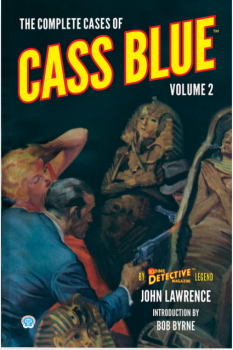 I’ve got another introduction out for Steeger Books. I got to jump in for Volume Two of John Lawrence’s tough PI, Cass Blue. Here’s that intro, to whet your appetite. If you like what you read, check out the two books. I hadn’t read Blue before writing this intro, and I enjoyed discovering these stories.
I’ve got another introduction out for Steeger Books. I got to jump in for Volume Two of John Lawrence’s tough PI, Cass Blue. Here’s that intro, to whet your appetite. If you like what you read, check out the two books. I hadn’t read Blue before writing this intro, and I enjoyed discovering these stories.
Cass Blue presented an unusual combination to the readers of Dime Detective when he arrived in November of 1932 in “The Bloodstone.” The settings of the first three stories were more akin to an Agatha Christie novel than to the pages of a hardboiled pulp magazine. The country manor; the island only reachable by boat; a houseful of suspects – and potential victims. But there were also those elements of the Weird Menace pulps. What’s a country house without a seance? Need a masked assailant? – Check. Murder by mad bomber? Of course!
In addition to the Christie-esque setting and the Weird Menace tone, Blue himself is a tough guy that Roger Torrey or Frederick Nebel might have written. It’s a different type of Pulp Stew than readers were used to in Dime Detective when Blue became a regular in 1934.
Story four – “Calling All Cars” – involved a big heist caper and a serial killer. It was different from the first three, but still not the usual private eye yarn. It had a pretty big scope. You can find those first four stories in Volume One, also from Steeger Books. It also includes an excellent intro by Ed Hulse, looking at the history of Dime Detective.
This second volume starts a little more traditionally with “Guilty Party” from the August 15, 1935 issue of Dime Detective. “Calling All Cars” had been in the prior issue, only two weeks before. Blue is walking home, pleased that his private detective business has lasted for eight years – with Blue still alive to enjoy it. A harmless-looking fellow is following him through a snowstorm, and Blue figures it’s a stool pigeon looking to sell some info.
Blue passes by his apartment building and stops in the park to wait for the man, who speaks irregularly for a moment, then starts blasting away. Blue runs, and we quickly learn there’s much more going on than it seems. This is more typical of the hardboiled private eye life. But we quickly revert to usual form.
A psychiatrist hires Blue to keep him alive for a few more days, and we’re off to an isolated house out in the woods – with a lab connected to it by an underground tunnel. We’re in countryside mad scientist territory here. A group of people is snowed in, miles from the nearest house, phones down, and a murder occurs: we’re back to Christie.
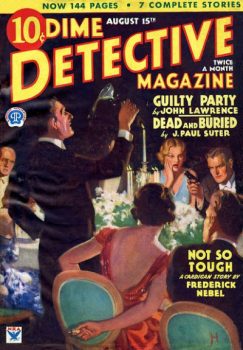 Because of the secluded settings in several of the stories, the police are often not available, and Blue functions as de facto law. This frequently involves ordering around the suspects, who pretty much always obey. He holds the scene together until the law arrives. And usually the rural officials cooperate or follow his lead.
Because of the secluded settings in several of the stories, the police are often not available, and Blue functions as de facto law. This frequently involves ordering around the suspects, who pretty much always obey. He holds the scene together until the law arrives. And usually the rural officials cooperate or follow his lead.
Blue had himself been a cop for five years, quitting and becoming a private eye, staying in New York City. He is tough: willing to shoot it out, or use fists and a blackjack, in the service of his client. He isn’t very good at avoiding bullets – he seems to get shot more than most private eyes.
He isn’t particularly fond of the police, though he doesn’t aggravate them just for fun. But he doesn’t let them slow him down. He’ll skedaddle from his office, or sneak out the back way, to avoid them if he thinks the situation calls for it.
He and a police detective, Bruckman, have it out at the beginning of “The Barking Body.” Bruckman tells him that Blue has gotten off easy with the police, since they’ve only roughed him up the standard amount – not given him ‘the works.’ Since four of them are about to blackjack him down in the police station, one tends to see Blue’s side of the relationship.
Bruckman tells Blue he’ll dedicate significant resources to help the PI get one Ike Owens. But if Blue doesn’t come across with some assistance, Bruckman will bury him – put him out of business. The cop doesn’t believe that Blue has never met, seen, or even had anything to do with the shyster lawyer, Owens. Which almost leads to that beating.
Blue is forced to solve this case to keep his livelihood intact; he is his own client. He heads off to Westchester, where a few good Nero Wolfe adventures take place. Blue gets hired to help recover a kidnapped girl, and things are more along the lines of the standard private eye case. Ike Owens’ name comes up in the kidnapping, so it ties back to his difficulties with Bruckman and the NYC police.
Blue regularly gets knocked unconscious.It’s not uncommon for him to wake up and find that his assailant has taken some important piece of evidence. Sometimes he gets blindsided – others, he puts up a pretty good fight. He often attempts, but fails, to get his gun out before being subdued. But it’s a rare case that doesn’t see him left asleep and the bad guy gone when he wakes up. It happens again in “Guilty Party.”
“Fade Out” is the sixth of nine stories, and we dig a little deeper into Blue. Not long after he left the force, a kidnapping went wrong and Ben Ross’ little daughter’s throat was slit.The killer was a man named Nate Chapman, who turned himself in and told a tale that somehow got him released. He immediately disappeared, and Ben Ross walked into the office of Chapman’s lawyer and blew his head off, getting sent to jail.
Blue roamed the streets with a gun, ready to kill Chapman, but never found him. Seven-ish years later, a movie agent shows up in Blue’s office: Chapman was on the West Coast and wanted to kill his client; an actress who saw him murder someone.
“I thought of a world full of Nate Chapmans, of vicious, thieving, cowardly, parasites…of wanting to slash, to stamp, to beat him down.” There’s a primal hate – and a fear of what evil does in the world – here. It’s the brutality of Race Williams, but as an actual developed character.
Blue has a sub-client in this one, and he takes her out to the middle of a forest, where two houses separated by a swimming pool are behind an iron gate set in a barbed-wire fence. Once again we’re far away from the urban mean streets.
The Blue stories can be prone to a common malady of mystery stories – the long summation speech. The hero gives a long and often boring, overly-detailed explanation of everything. I find these more tolerable in a novel: Perhaps because they’re much longer works, and they don’t seem as expansive relative to the sheer number of pages. But when every page matters in a short story, two pages of exposition can be dull. It felt like Blue talked for an hour at the end of “Guilty Party.”
It isn’t as bad in the next story, but it still seems like a flaw. Fortunately, there is action right up to the end of “The Barking Body,” but it’s discourse time again at the end of the next one. These ‘tell-alls’ are convoluted, confusing, and harm, rather than improve, the stories.
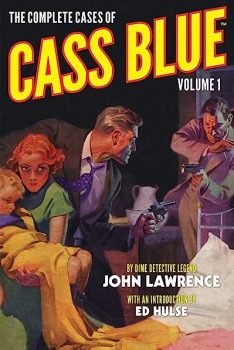 “A Burial is Arranged” starts us out in Weird Menace territory again. A midnight visit to the worst slums of the Italian quarter lands Blue as the middleman in a blackmail case. His client is an undertaker who may have embalmed a man who wasn’t actually dead!
“A Burial is Arranged” starts us out in Weird Menace territory again. A midnight visit to the worst slums of the Italian quarter lands Blue as the middleman in a blackmail case. His client is an undertaker who may have embalmed a man who wasn’t actually dead!
Blue’s morals are somewhat flexible. He goes the limit for his client.But that means annoying obstacles may need to be disposed of. When he wants to keep a shooting from the police near the beginning of “A Burial is Arranged,” he tells two bystanders he’ll frame them as accomplices if they tell the cops anything. And the same applies to anybody else in the house who speaks up. Then he says he’ll kill the lot of them if they do. Definitely some flexibility being exercised there.
Shortly after, he uses his gun to club unconscious a cop he knows – so he can continue a pursuit – and then blackjacks a security guard to gain access to a building.
Blue is willing to push the lines whenever it serves his view of the client’s needs. Even if his client has shuffled off this mortal coil.
And without giving away too much, it’s clear to readers that hiring Blue is a precarious proposition. The mortality rate for his clients would be considered an excellent average in most endeavors. I wish I had the same percentage for my free throws.
This story has an odd vignette, which follows another overly-detailed explanation to the same cop he had knocked out earlier. It explains the killer’s motive, but I found it a totally unnecessary ending.
“Dangerous Dollars” was the final Cass Blue story, and it was in the June 1, 1935 issue of Dime Detective. Blue is hired by a client who tells him there’s a million dollars with dubious ownership out there. Of course, the client withholds useful info and Blue has to find things out the hard way – constantly putting himself in harm’s way. Blue would be dead if the villains had simply run him over with their car, instead of leaving it to chance by laying him out to get hit by a garbage truck instead. But that kind of death only happens to victims, never the protagonist.
I think that this is the most ‘traditional’ of all the Cass Blue stories, and it’s got a pretty strong finish. No seances, secret science labs, or masked attackers in this one. That Weird Menace element, present in most of the stories, is left out. And no isolated house or secluded island – it’s the urban jungle, not Agatha Christie.
There are several characters to keep track of throughout, and we see all of them around the climax. There is a loooong summation near the end, which Blue overhears, rather than makes himself. I found myself pushing through these speeches – definitely a weak point of the series for me.
John (Fleming) Gould illustrated this issue and it includes a terrific pic at the beginning of the story; the scene is from later on of course. It’s a great action shot.The issue also includes a Cardigan story (Frederick Nebel).
The artist swapped out Gould for Fleming (his mother’s maiden name) as a last name, for professional purposes. Fleming illustrated Pulps and Slicks in a career lasting from the twenties into the fifties. He was also an art instructor for much of that time. He did many illustrations for Popular Publications pulps, which included Dime Detective.
The final seven (of nine) Blue stories appeared over a thirteen month span. Lawrence essentially quit the Pulps after 1942, but he was done with Blue after this 1935 story. His prior Dime Detective character, Sam Beckett, had a similarly abrupt ending. The final four stories appeared over seven months, with the second Blue story appearing the month after Beckett’s final story.
He would fill the pages of Dime Detective with two more series’: first, The Marquis of Broadway, and then the Acme Identity Op.
If Carroll John Daly had been a better writer – character, plot, and prose – Cass Blue kind of feels like a better version of Race Williams.
Other Steeger Books Intros I’ve Written:
Hugh B. Cave’s Peter Kane
Norbert Davis in Black Mask – Volume 1
Norbert Davis’ Max Latin
Dashiell Hammett – ZigZags of Treachery
T.T. Flynn’s Mike & Trixie (The ‘Lost Intro’)
Prior Posts in A (Black) Gat in the Hand – 2023 Series (14)
 Back Down those Mean Streets in 2023
Back Down those Mean Streets in 2023
Will Murray on Hammett Didn’t Write “The Diamond Wager”
Dashiell Hammett – ZigZags of Treachery
Ten Pulp Things I Think I Think
Evan Lewis on Cleve Adams
T.T. Flynn’s Mike & Trixie (The ‘Lost Intro’)
John Bullard on REH’s Rough and Ready Clowns of the West – Part I (Breckenridge Elkins)
John Bullard on REH’s Rough and Ready Clowns of the West – Part II
William Patrick Murray on Supernatural Westerns, and Crossing Genres
Erle Stanley Gardner’s ‘Getting Away With Murder (And ‘A Black (Gat)’ turns 100!)
James Reasoner on Robert E. Howard’s Trail Towns of the old West
Frank Schildiner on Solomon Kane
William Patrick Murray on the Title of Hammett’s The Glass Key
Paul Bishop on The Fists of Robert E. Howard
Prior posts in A (Black) Gat in the Hand – 2022 Series (16)
Asimov – Sci Fi Meets the Police Procedural
The Adventures of Christopher London
Weird Menace from Robert E. Howard
Spicy Adventures from Robert E. Howard
Thrilling Adventures from Robert E. Howard
Norbert Davis’ “The Gin Monkey”
Tracer Bullet
Shovel’s Painful Predicament
Back Porch Pulp #1
Wally Conger on ‘The Hollywood Troubleshooter Saga’
Arsenic and Old Lace
David Dodge
Glen Cook’s Garrett, PI
John Leslie’s Key West Private Eye
Back Porch Pulp #2
Norbert Davis’ Max Latin
Prior posts in A (Black) Gat in the Hand – 2021 Series (7 )
The Forgotten Black Masker – Norbert Davis
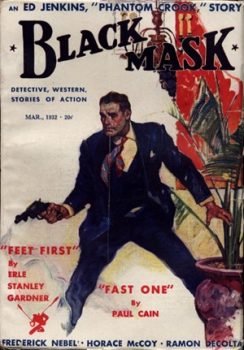 Appaloosa
Appaloosa
A (Black) Gat in the Hand is Back!
Black Mask – March, 1932
Three Gun Terry Mack & Carroll John Daly
Bounty Hunters & Bail Bondsmen
Norbert Davis in Black Mask – Volume 1
Prior posts in A (Black) Gat in the Hand – 2020 Series (21)
Hardboiled May on TCM
Some Hardboiled streaming options
Johnny O’Clock (Dick Powell)
Hardboiled June on TCM
Bullets or Ballots (Humphrey Bogart)
Phililp Marlowe – Private Eye (Powers Boothe)
Cool and Lam
All Through the Night (Bogart)
Dick Powell as Yours Truly, Johnny Dollar
Hardboiled July on TCM
YTJD – The Emily Braddock Matter (John Lund)
Richard Diamond – The Betty Moran Case (Dick Powell)
Bold Venture (Bogart & Bacall)
Hardboiled August on TCM
Norbert Davis – ‘Have one on the House’
with Steven H Silver: C.M. Kornbluth’s Pulp
Norbert Davis – ‘Don’t You Cry for Me’
Talking About Philip Marlowe
Steven H Silver Asks you to Name This Movie
Cajun Hardboiled – Dave Robicheaux
More Cool & Lam from Hard Case Crime
A (Black) Gat in the Hand – 2019 Series (15)
Back Deck Pulp Returns
A (Black) Gat in the Hand Returns
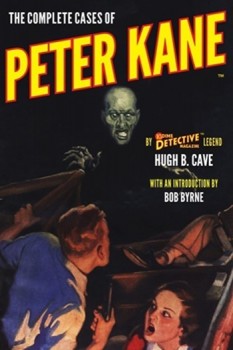 Will Murray on Doc Savage
Will Murray on Doc Savage
Hugh B. Cave’s Peter Kane
Paul Bishop on Lance Spearman
A Man Called Spade
Hard Boiled Holmes
Duane Spurlock on T.T. Flynn
Andrew Salmon on Montreal Noir
Frank Schildiner on The Bad Guys of Pulp
Steve Scott on John D. MacDonald’s ‘Park Falkner’
William Patrick Murray on The Spider
John D. MacDonald & Mickey Spillane
Norbert Davis goes West(ern)
Bill Crider on The Brass Cupcake
A (Black) Gat in the Hand – 2018 Series (33)
George Harmon Coxe
Raoul Whitfield
Some Hard Boiled Anthologies
Frederick Nebel’s Donahue
Thomas Walsh
Black Mask – January, 1935
Norbert Davis’ Ben Shaley
D.L. Champion’s Rex Sackler
Dime Detective – August, 1939
Back Deck Pulp #1
W.T. Ballard’s Bill Lennox
Erle Stanley Gardner’s The Phantom Crook (Ed Jenkins)
Day Keene
Black Mask – October, 1933
Back Deck Pulp #2
Black Mask – Spring, 2017
Erle Stanley Gardner’s ‘The Shrieking Skeleton’
Frank Schildiner’s ‘Max Allen Collins & The Hard Boiled Hero’
A (Black) Gat in the Hand: William Campbell Gault
A (Black) Gat in the Hand: More Cool & Lam From Hard Case Crime
MORE Cool & Lam!!!!
Thomas Parker’s ‘They Shoot Horses, Don’t They?’
Joe Bonadonna’s ‘Hardboiled Film Noir’ (Part One)
Joe Bonadonna’s ‘Hardboiled Film Noir’ (Part Two)
William Patrick Maynard’s ‘The Yellow Peril’
Andrew P Salmon’s ‘Frederick C. Davis’
Rory Gallagher’s ‘Continental Op’
Back Deck Pulp #3
Back Deck Pulp #4
Back Deck Pulp #5
Joe ‘Cap’ Shaw on Writing
Back Deck Pulp #6
The Black Mask Dinner

Bob Byrne’s ‘A (Black) Gat in the Hand’ made its Black Gate debut in 2018 and has returned every summer since.
His ‘The Public Life of Sherlock Holmes’ column ran every Monday morning at Black Gate from March, 2014 through March, 2017. And he irregularly posts on Rex Stout’s gargantuan detective in ‘Nero Wolfe’s Brownstone.’ He is a member of the Praed Street Irregulars, founded www.SolarPons.com (the only website dedicated to the ‘Sherlock Holmes of Praed Street’) and blogs about Holmes and other mystery matters at Almost Holmes.
He organized Black Gate’s award-nominated ‘Discovering Robert E. Howard’ series, as well as the award-winning ‘Hither Came Conan’ series. Which is now part of THE DEFINITIVE guide to Conan. He also organized 2023’s ‘Talking Tolkien.’
He has contributed stories to The MX Book of New Sherlock Holmes Stories – Parts III, IV, V, VI, XXI, and XXXIII.
He has written introductions for Steeger Books, and appeared in several magazines, including Black Mask, Sherlock Holmes Mystery Magazine, The Strand Magazine, and Sherlock Magazine.